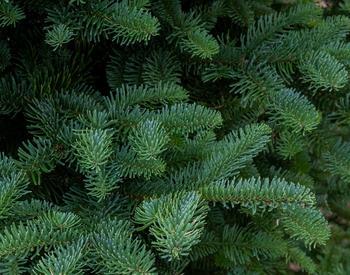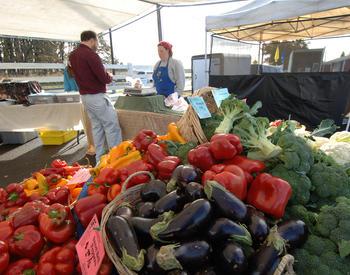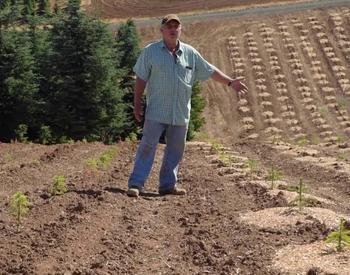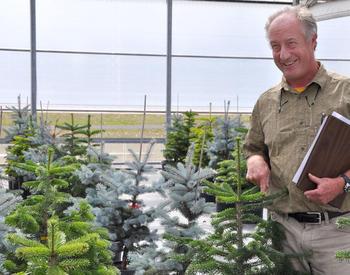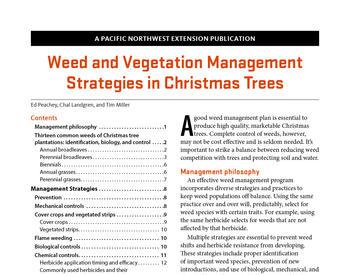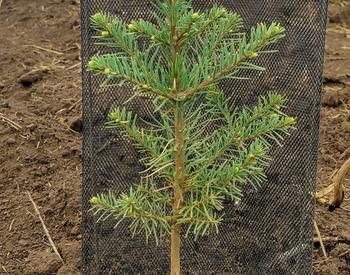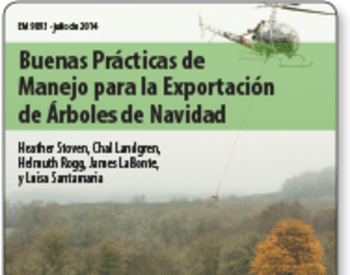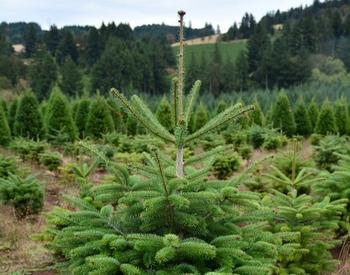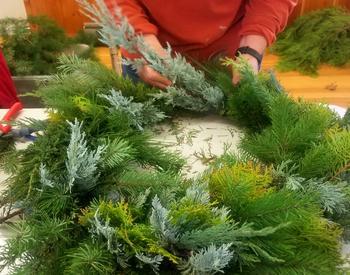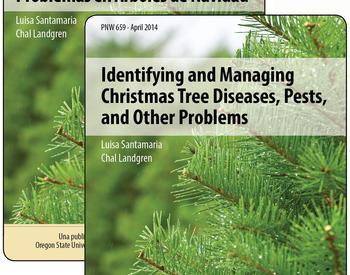Christmas tree growers have no doubt read countless articles about using beneficial insects as part of an integrated pest management program. It may seem overwhelming and hard to know where to even begin, but getting started might be easier than it looks.
Christmas tree plantations exhibit a variety of management methods, all mostly successful in their own right. They range from almost entirely weed-free to unsprayed fields complete with native weeds and grasses, and everything in between (figure 1).
At these varied sites, beneficial insects have been tested for their effectiveness in reducing aphid populations. Through research trials and observations in these fields, various populations of beneficial insects have been tallied, including some of the more widely known lady beetles, their larval stages and egg clusters (figure 2); hoverflies; lacewings and their very hard-to-spot larvae and eggs (figure 3); European honeybees; beetles; spiders; and many more.
Experience has shown that using beneficial insects is not an instant success. So, before buying some lacewings or lady beetles to release, consider some of the ideas outlined below as first steps. If insects have habitats with food, they will more likely stay in that location. If not, they’re moving on!
So to get started, here are a few ideas that could make a big impact. The best part is that you don’t need to be an expert or an entomologist to take some initial first steps. Many of these concepts have resulted in higher beneficial counts in many fields. But it’s a process that takes time.
For any successful endeavor with beneficial insects, maintaining or creating a suitable habitat is essential for good populations. Insects need food sources of pollen and nectar, shelter and water. Some primary habitat areas to consider are:
In field edges/fence rows: If a site has areas of native flowering plants that naturally occur, maintain and enhance these areas with additional wildflower seed or other plants where beneficials can feed and find shelter. Additionally, fence rows or other borders can serve as good areas for native shrubs such as Oregon grape and other flowering perennials and annuals (figure 4).
Remnant ecosystems: Sites with areas of native forests or patches of remaining vegetation surrounding or adjacent to the Christmas tree plantings not only make great habitat for beneficials but also for birds of prey and bats that assist with controlling other pests such as rodents.
In-field plantings: These are areas located within Christmas tree plantings that can be utilized in various ways. Some growers put in wide strips of native grass or perennials that double as their spray paths or roadways within their fields. Other methods include end row plantings and cover crops between each row of trees with a native or other low-maintenance grass or white Dutch clover (figure 5).
Slough/wet areas: For farms with low or poorly draining areas, which tend to be not ideal for growing nobles and/or other species, consider leaving them natural to add habitat diversity. These can be good spots for sheltering frogs, attracting birds of prey and other beneficial insects that may need that specific environment.
Beetle banks: Beetle banks are raised swaths four- to six-feet wide in the fields that are planted with native bunch grasses and provide shelter for overwintering predacious ground beetles. By having these areas, the diversity and number of ground beetles often increase. Ground beetles are known to eat slugs, aphids, and the larvae and pupae of many insects including those of the Douglas-fir needle midge. Other ground-dwelling predators, including spiders, benefit from the addition of these grass banks as well.
Utilizing or developing any of these described areas is a positive move toward creating an environment suitable to attract and keep many beneficial insects on a farm. Providing the pollen, nectar, shelter and places to reproduce and spend the winter for lady beetles, green lacewings, beetles and other beneficials is the first step in using beneficials to improve tree quality and possibly using less pesticides in the process. Even spraying less herbicide and having some remaining weeds in your field provides some essential habitat (figure 6).
To learn more about beneficials, there are a lot of resources available online from local soil and water conservation districts, through Oregon State University and many other sources. Many resources are listed on the OSU Christmas tree website at https://beav.es/3BW. More information on promoting beneficial insects on Christmas tree plantations are on the OSU Extension Christmas tree website.

